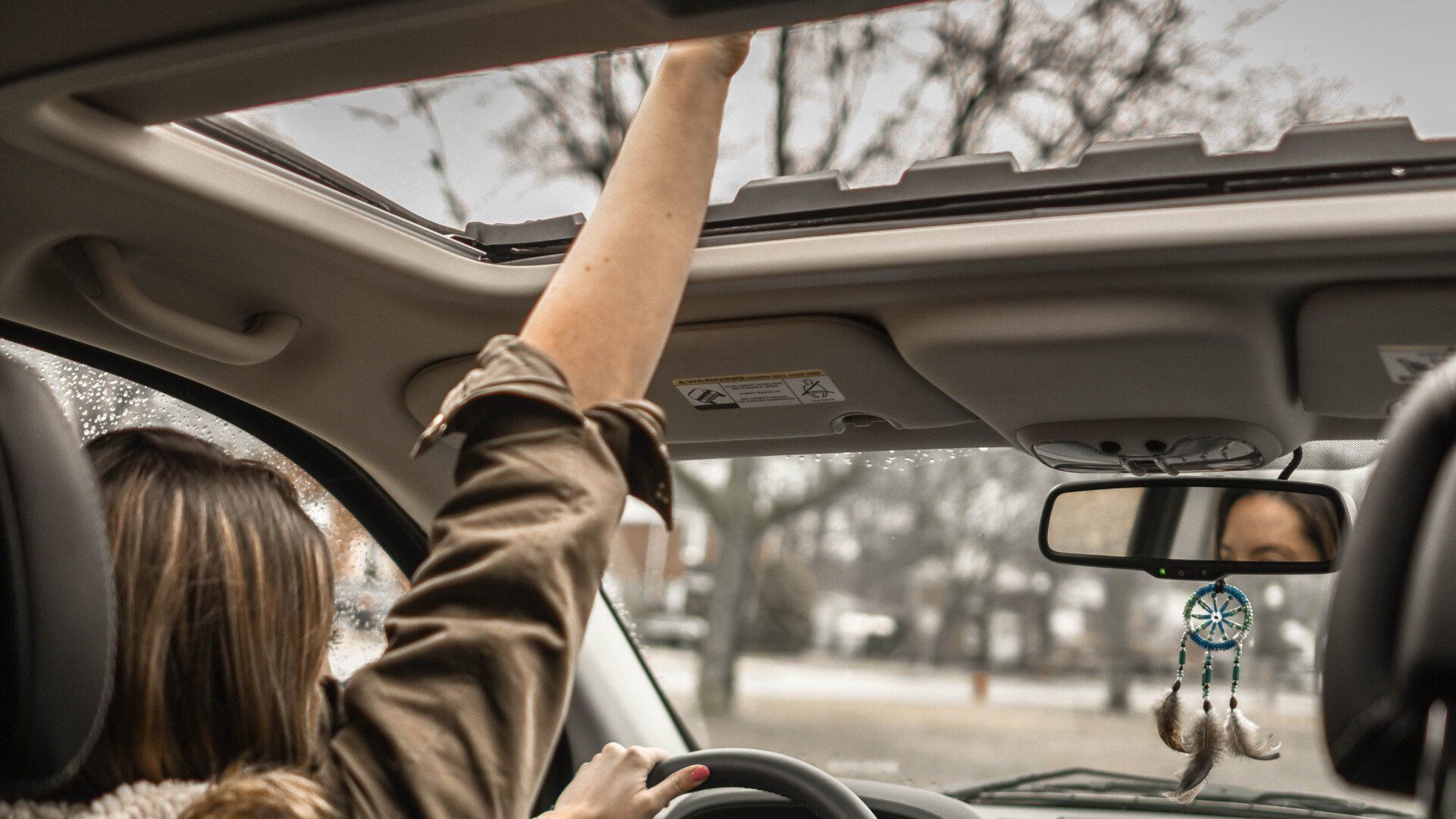Getting Started in Food Delivery Work

In a world where the convenience of getting almost anything delivered to your doorstep has become the norm, the appeal of gig work, especially in the food delivery sector, has skyrocketed. The idea of cruising around the city, with the freedom to choose your working hours, all while earning some extra cash on the side, seems quite enticing. It's like having your cake (or delivering it!) and eating it too.
Venturing into the world of food delivery can be both exciting and nerve-wracking. The appeal of earning money on a flexible schedule draws many to this side hustle. Yet, the reality of navigating the gig economy, especially as a delivery driver, comes with its set of challenges. Here’s a starter guide to help you wade through the initial steps of becoming a food delivery driver, whether it’s through Uber Eats, DoorDash, Grubhub, or any other platform. By understanding the nuances of different platforms, pay structures, and essential gear, you'll be better equipped to make informed decisions on this journey.
Choosing the Right Food Delivery Work Platform
Your success in the food delivery sector largely depends on choosing a platform that aligns with your goals and the market demand in your area. The leading food delivery platforms include Uber Eats, DoorDash, and Grubhub, each with its unique set of pros and cons.
- Uber Eats: Known for its extensive network and high demand, especially in urban areas. However, the competition among drivers can be fierce.
- DoorDash: Offers a user-friendly app and often has a high volume of orders. The Dasher community is also known for being supportive.
- Grubhub: Renowned for its higher pay per delivery, but might have fewer orders depending on the area.
The market demand in your area plays a significant role. Platforms like Uber and DoorDash might have a solid customer base in urban areas, but in smaller towns, a local delivery service might hold the reins. Research the demand in your area, perhaps by talking to existing gig workers, to choose the platform that's likely to bring you the most business.
Understanding the Pay Structure of the Delivery Service
The pay structure in the gig economy, particularly in food delivery work, can be a bit complex. Here's a breakdown of how it generally works:
- Base Pay: This is the fixed amount you receive per delivery. It's determined by the distance, time, and desirability of the order.
- Tips: Customer tips can significantly boost your earnings. Some platforms show the tip amount upfront, while others reveal it after the delivery.
- Bonuses and Incentives: Platforms often offer bonuses during busy hours or when you complete a certain number of deliveries.
According to data from Indeed, the average hourly pay for a DoorDash delivery driver is around $14, while Uber Eats drivers earn an average of $12 per hour. However, these figures can fluctuate widely depending on the area, day, and hours you work.
Essential Gear for Your Gig Economy Job
As you set off on this delivery journey, having the right gear is crucial. Here’s a checklist to get you started:
- Efficient Vehicle: Gas mileage matters. An efficient, reliable vehicle can help keep your costs down.
- Smartphone: A smartphone with a robust data plan is essential for managing your deliveries through the app.
- Insulated Delivery Bags: Keeping food at the right temperature is key to customer satisfaction, and insulated bags are a must-have.
- Car Chargers and Phone Mount: These will keep your phone charged and easily accessible as you navigate from one delivery to the next.
Starting a gig as a food delivery driver is about equipping yourself with the right tools and understanding the landscape you're diving into. The challenges can be daunting, but with a solid grasp of what to expect, you're one step closer to making an informed decision on whether this gig is right for you. As you explore this venture, the idea of delving into an online platform business that rewards you instantly for recommending products might also catch your fancy. A shift towards such a model can offer a more structured earning opportunity, bridging the gap between the unpredictable nature of delivery gigs and a steady income source.
In our next segment, we'll delve deeper into alternative earning avenues, including a unique proposition that transcends the conventional gig economy framework. Stay tuned, and in the meantime, feel free to explore the world of delivery driving with the insights provided above.
The Daily Grind of a Food Delivery Rider
Embarking on a journey as a food delivery rider is like taking a roller-coaster ride through the bustling streets of the city. Every day brings a new set of challenges, be it battling traffic, ensuring customer satisfaction, or securing personal safety. Let’s delve into the nitty-gritty of a day in the life of a delivery rider, shedding light on both the hurdles and the triumphs that come along the way.
Navigating the City Where You Choose to be a Food Delivery Driver
The very essence of food delivery work lies in navigating through the city's veins, delivering sustenance to people’s doorsteps. However, the reality of darting through traffic, finding a spot to park, and ensuring timely deliveries can test your patience and skills.
- Traffic: The bane of a delivery driver's existence, traffic can significantly delay delivery times, affecting your ratings and tips. An Uber Eats driver from New York quoted, “It’s a race against time, every minute counts especially during rush hours.”
- Parking: Finding a legal and safe parking spot near the drop-off location is another hurdle. In crowded urban areas, this can be a game of chance.
- Timely Deliveries: Meeting delivery times is crucial for maintaining a good rating. It's a delicate balance of speed and safety.
Handling Customer Expectations
Customer service is the cornerstone of successful gig work in the delivery realm.
- Customer Complaints: Handling complaints with grace, be it wrong orders or delayed delivery, is part of the job. It’s about finding solutions promptly and maintaining a positive demeanor.
- Ratings: A good rating can significantly impact your visibility and order frequency on the platform. Every interaction, every delivery counts.
- Customer Service: Going the extra mile to ensure customer satisfaction can pay off in the form of tips and good reviews. A simple smile or a polite gesture can go a long way.
Staying Safe when Becoming a Food Delivery Driver
The gig economy often entails working at odd hours, and for food delivery drivers, safety during late-night deliveries is paramount.
- Late-Night Deliveries: Venturing into unfamiliar or poorly lit neighborhoods can be risky. It's advisable to stay vigilant and be aware of your surroundings.
- Personal Safety Gear: Investing in personal safety gear like pepper spray or a personal alarm can provide a sense of security.
- Vehicle Safety: Ensuring your vehicle is in top-notch condition is crucial to prevent breakdowns in undesirable locations.
The life of a delivery driver in the gig economy is far from a smooth ride. However, amidst the daily grind, the sense of freedom and the potential to earn on your terms shines through. Yet, there's a budding conversation around seeking alternative avenues that still uphold the essence of gig work while providing a steadier income stream and a community-centric environment. As the food delivery market continues to evolve, so do the opportunities that lie beyond the traditional gig economy framework. Our next segment will introduce a fresh perspective on leveraging online platforms to create a sustainable and rewarding gig experience.
The Less Glamorous Side of Gig Economy Jobs
The allure of flexible work hours and being your own boss in the gig economy often overshadows the less glamorous aspects of gig work. Like any other job, food delivery work comes with its share of downsides that are crucial to consider before diving in headfirst. Let’s unravel the often overlooked facets of gig work that every aspiring delivery driver should be aware of.
The Wear and Tear Of Food Delivery Service
Every mile you drive, every pothole you dodge, contributes to the gradual wear and tear of your vehicle. The hidden costs of vehicle maintenance can chip away at your earnings over time.
- Vehicle Maintenance: Regular maintenance, unexpected repairs, and depreciation are significant factors. An average gig worker spends around $100 to $400 monthly on vehicle maintenance, depending on the vehicle's age and condition.
- Fuel Prices: With fluctuating fuel prices, a significant chunk of your earnings can go towards keeping your tank full. In 2022, the average fuel cost per mile was around $0.15, which can add up quickly on a busy delivery day.
- Other Hidden Expenses: Things like tolls, parking tickets, and even car washes contribute to the less apparent costs associated with delivery work.
The Unpredictable Income Due to Delivery Costs and Other Costs
The income in gig work is as unpredictable as the weather. While some days can be bountiful, others can leave you high and dry.
- Earnings Inconsistency: The fluctuation in daily earnings can make budgeting a challenging task. A Dasher from San Francisco mentioned, "Some days I hit a jackpot with over $200, and other days it's a struggle to make even $50."
- Peak Hours: Earnings often spike during lunch and dinner times, but the slow hours in between can be financially draining.
- Customer Tips: The reliance on customer tips can lead to significant income inconsistency. The tips can vary widely from one delivery to another, impacting overall earnings.
Lack of Benefits for the Gig Worker
One stark reality of gig work is the absence of traditional employment benefits.
- Healthcare Benefits: Gig workers are often on their own when it comes to healthcare benefits. The lack of employer-sponsored healthcare can be a significant drawback.
- Paid Time Off: There's no paid sick leave or vacation time in the gig economy. Every day off is a day without earnings.
- Retirement Plans: Without employer-sponsored retirement plans, gig workers need to plan for their retirement independently, which can be a daunting task.
The path of gig work is laden with both opportunities and challenges. As the demand for food delivery continues to soar, understanding the intricacies of this work arrangement is vital for making informed decisions. Our subsequent sections will delve into alternative gig opportunities that offer a more structured earning model while retaining the essence of gig work.
Considering Alternative Side Hustle: The UnFranchise Business Concept
The roller-coaster ride of earnings, coupled with the lack of job security in the gig economy, often leads many to seek alternative or supplementary income avenues. One such alternative is engaging in an online platform business that rewards you instantly for recommending products. It's about transitioning from delivering food to delivering value through product recommendations.
- Pitfalls of Food Delivery Gigs: The unpredictable income, lack of benefits, and the physical toll of delivery work can be daunting over time. As a delivery driver, your earnings are directly tied to the number of deliveries you make, which can be exhausting.
- Advantages of Online Platform Business: Contrarily, an online platform business empowers you with a virtual storefront, where earnings potential is not capped by the number of hours you put in. The instant payment for product recommendations is a refreshing change from waiting for weekly payouts.
- UnFranchise Business Model: The UnFranchise Business model coupled with SHOP.COM's Virtual Interactive Financial Transactions (VIFT) wallet offers a structured approach towards earning. It’s a community-driven model that encourages continuous learning and provides a platform for stable earnings. It’s about leveraging the power of collective buying and earning on terms defined by you, not a gig platform.
Inviting a Change for the Gig Worker
Change is the only constant, and when it beckons towards a more stable and rewarding work model, it’s worth the consideration.
- Zoom into the Future: An invitation is extended to you to join a Zoom session to explore the UnFranchise Business model in detail. It’s an avenue to learn, interact, and see firsthand the potential of moving beyond the gig economy.
- Control, Community, and Continuous Learning: The shift from gig work to a model that fosters community, control over your earnings, and continuous learning can be a game-changer in your professional journey.
Conclusion
Navigating the gig economy as a food delivery rider is akin to riding through the bustling streets - it’s filled with unexpected turns, bumps, and the occasional traffic jam. However, it also holds the promise of adventure, independence, and the satisfaction of delivering smiles, one order at a time. Yet, the potential of exploring alternative earning models like the UnFranchise Business beckons. It’s an invitation to transition from a path of endless deliveries to a journey of endless possibilities. The choice between remaining a cog in the gig economy wheel or steering your ship in the vast ocean of online business opportunities awaits. The road is open, and the possibilities are as vast as the open road that lies ahead of a delivery driver at the break of dawn.
Frequently Asked Questions (FAQ)
What makes gig work in the delivery sector appealing?
- The gig work in the delivery sector, particularly through platforms like Uber Eats, DoorDash, and others, offers a flexible work arrangement allowing individuals to earn extra cash on their schedule.
How does the pay structure for a delivery driver work in the gig economy?
- The pay structure typically consists of a base pay per delivery, plus tips, and sometimes bonuses during high-demand times. The earnings can fluctuate based on demand for food delivery, location, and individual work hours.
Is a special driver's application required to start with food delivery work?
- Yes, platforms like Uber Eats and DoorDash have their respective driver apps which you need to download to start accepting delivery requests.
How does the demand for food delivery affect gig economy jobs?
- The demand for food delivery has surged, especially post-pandemic, creating more gig economy jobs for those interested in delivery work.
What's the future of food delivery in the gig economy?
- With the continuous growth of online food delivery platforms, it's expected that gig economy jobs in the delivery sector will continue to evolve, offering various opportunities and challenges.
How does the gig economy delivery compare to traditional delivery jobs?
- Gig economy delivery jobs offer more flexibility and autonomy but often come with less job security and benefits compared to traditional delivery jobs.
What are the leading food delivery platforms in the gig economy?
- Leading food delivery platforms include Uber Eats, DoorDash, GrubHub, and Postmates among others.
Is there an opportunity to earn extra income outside of food deliveries in the gig economy?
- Yes, the gig economy is expansive with various platforms offering opportunities to earn extra income beyond food deliveries, like rideshare or even online platform business models such as the UnFranchise Business concept.
What are some alternatives to gig work in the food delivery market?
- Alternatives include exploring online business opportunities that allow for earnings through recommending products, like the UnFranchise Business model, which also offers a community-centric approach.
How do I transition from gig work to an alternative like the UnFranchise Business model?
- Attending informative Zoom sessions can provide insights into transitioning from gig work to a model like the UnFranchise Business, offering more control and continuous learning opportunities.
I Woke Up Awesome Blog











